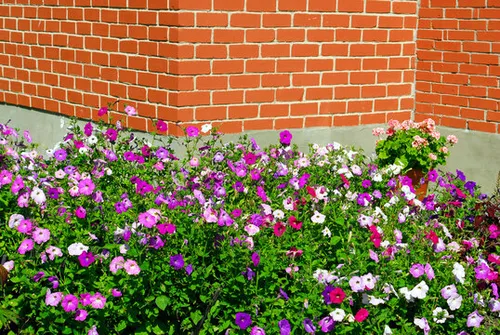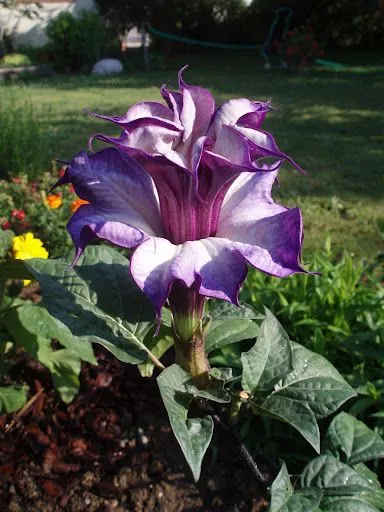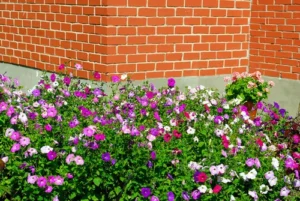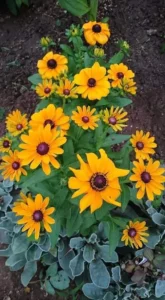The Complete Guide to Tulips: History, Varieties, Cultivation Tips, and More
Introduction
Tulips are among the most beloved flowers globally, celebrated for their vibrant colors and graceful forms. This comprehensive guide explores everything you need to know about tulips, from their rich history to practical tips on cultivation and landscaping.
Section 1: History and Origin of Tulips
Tulips originated in Central Asia and were cultivated by the Ottoman Empire. They were introduced to Europe in the 16th century, sparking a phenomenon known as Tulip Mania during the Dutch Golden Age.
Types and Varieties of Tulips
Tulips are classified into various types, including single early tulips, Darwin hybrids, and parrot tulips. Each type boasts distinct characteristics in terms of color, shape, and blooming period.
Tulip Cultivation
To grow tulips successfully, it’s essential to provide well-drained soil and ample sunlight. Planting bulbs in the fall ensures vibrant blooms in the spring. Regular watering and fertilization help maintain healthy plants.
Tulips in Gardening and Landscaping
Tulips are versatile in garden design, whether planted in borders, beds, or containers. They complement other spring bulbs and flowering plants, creating stunning visual displays.
Symbolism and Cultural Significance
Tulips symbolize love, beauty, and rebirth in various cultures. They have inspired artists and writers throughout history, appearing in paintings, poetry, and folklore.
Tulips Around the World
Notable tulip festivals include Keukenhof in the Netherlands and the Skagit Valley Tulip Festival in the United States. Countries like Turkey and Iran also celebrate tulip culture through art and festivals.
Conservation Efforts and Challenges
Efforts to conserve wild tulip species focus on preserving their natural habitats and combating threats such as climate change and habitat loss. Conservation organizations work to raise awareness and implement sustainable practices.
Fun Facts and Trivia
Did you know that tulip bulbs were once more valuable than gold during Tulip Mania? Tulips come in every color except true blue. The world’s tallest tulip is the ‘Darwin Hybrid’ variety, which can reach heights of up to 30 inches.
Buying and Selling Tulips
Tulip bulbs are available in a wide range of varieties and can be purchased from nurseries, garden centers, and online retailers. When buying tulip bulbs, consider factors such as bulb size, quality, and bloom time.
Conclusion
Tulips continue to captivate gardeners and enthusiasts worldwide with their beauty and symbolism. As we look to the future, preserving tulip diversity and promoting sustainable practices will ensure that future generations can enjoy these iconic flowers.
Tulips are not just flowers; they are icons of beauty, diversity, and cultural significance. In this extensive guide, we explore everything you need to know about tulips, from their origins and varieties to practical tips on growing them and their symbolism in different cultures.
Tulips trace their origins to the mountainous regions of Central Asia, where they grew wild. They were cultivated and appreciated by the Ottoman Empire, who introduced them to Europe in the 16th century. The Dutch Golden Age saw the peak of Tulip Mania, a speculative frenzy that made tulip bulbs more valuable than gold.
Tulips are classified into several types based on their characteristics and blooming times. These include:
Single Early Tulips:Known for their classic tulip shape and early spring bloom.
Darwin Hybrid Tulips: Tall and sturdy, with large, vividly colored blooms.
Parrot Tulips: Uniquely shaped petals with fringed edges, resembling parrot feathers.
Each type offers a range of colors and patterns, from solid hues to intricate blends.

Tulip Cultivation
Successful tulip cultivation begins with selecting healthy bulbs and preparing well-draining soil enriched with organic matter. Plant bulbs in the fall at a depth of about twice their size, ensuring they receive full sun or partial shade. Regular watering and mulching help maintain soil moisture and protect bulbs from extreme temperatures. Fertilize in early spring to promote healthy growth and vibrant blooms.
Tulips in Gardening and Landscaping
Tulips are versatile in garden design, adding color and elegance to various settings. They can be planted in:
Garden Beds: Create stunning displays when mass-planted or mixed with other spring bulbs like daffodils and hyacinths.
-Borders and Edges: Define pathways and garden borders with rows of tulips in complementary colors.
Containers: Ideal for small spaces and urban gardens, tulips thrive in containers with well-draining soil and adequate sunlight.
Symbolism and Cultural Significance
Tulips carry diverse symbolism across different cultures:
In Turkey, tulips symbolize paradise on earth and are woven into carpets and textiles.
In the Netherlands, tulips represent love and are celebrated during the annual Keukenhof Gardens festival.
Symbol of renewal and perfect love in Persian literature.
Their beauty has inspired artists, poets, and designers throughout history, making them a timeless motif in art and culture worldwide.
Tulips Around the World
Tulip festivals attract visitors globally, showcasing the diversity and beauty of these flowers. Key festivals include:
Keukenhof Gardens: Located in Lisse, Netherlands, it’s one of the world’s largest flower gardens, featuring millions of tulips in bloom.
Skagit Valley Tulip Festival: Held annually in Washington State, USA, visitors enjoy expansive fields of colorful tulips against a backdrop of mountains.
Countries like Turkey and Iran celebrate tulip culture through art, festivals, and urban landscapes adorned with tulip motifs.
Conservation Efforts and Challenge
Conserving wild tulip species is crucial due to habitat loss and climate change. Conservation efforts focus on:
Preservation: Protecting natural habitats and promoting sustainable cultivation practices.
Research: Studying wild tulip species to understand their ecology and genetic diversity.
Awareness:Educating the public about the importance of conserving biodiversity and supporting local conservation initiatives.
Challenges include habitat fragmentation and invasive species, which threaten the survival of wild tulip populations worldwide.
Fun Facts and Trivia
Explore fascinating facts about tulips:
Tulip bulbs were once used as currency during Tulip Mania in 17th-century Netherlands.
The ‘Queen of Night’ tulip is famous for its deep, velvety purple-black petals.
Tulips can continue to bloom for years if cared for properly, with some species naturalizing in gardens over time.
These quirky details add depth to the allure of tulips, making them not only beautiful but also intriguing.
Buying and Selling Tulps
When purchasing tulip bulbs, consider factors such as:
-Bulb Size and Quality:Larger bulbs often produce stronger plants and more substantial blooms.
Bloom Time: Select varieties that bloom early, mid-season, or late to extend the flowering period in your garden.
Supplier Reputation: Buy from reputable nurseries and online retailers known for quality bulbs and reliable customer service.




